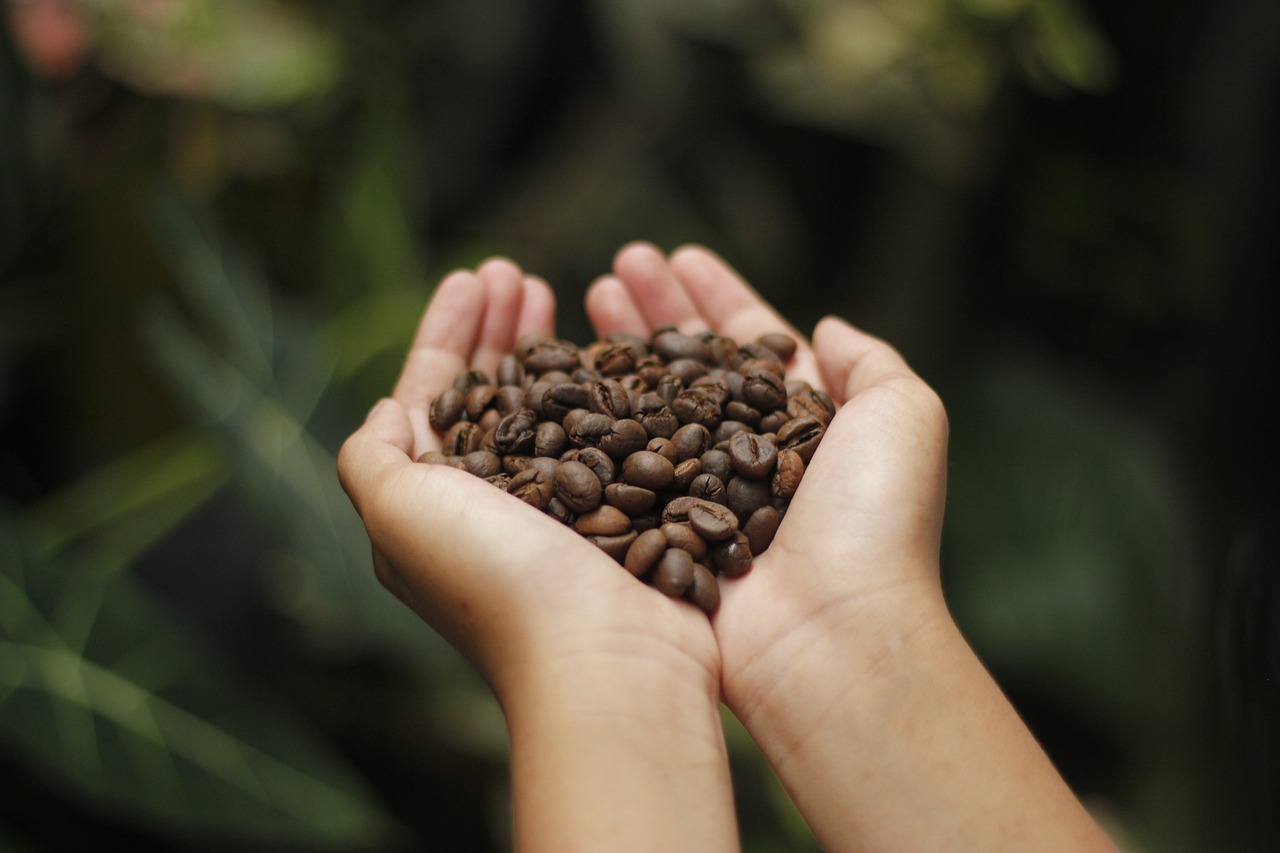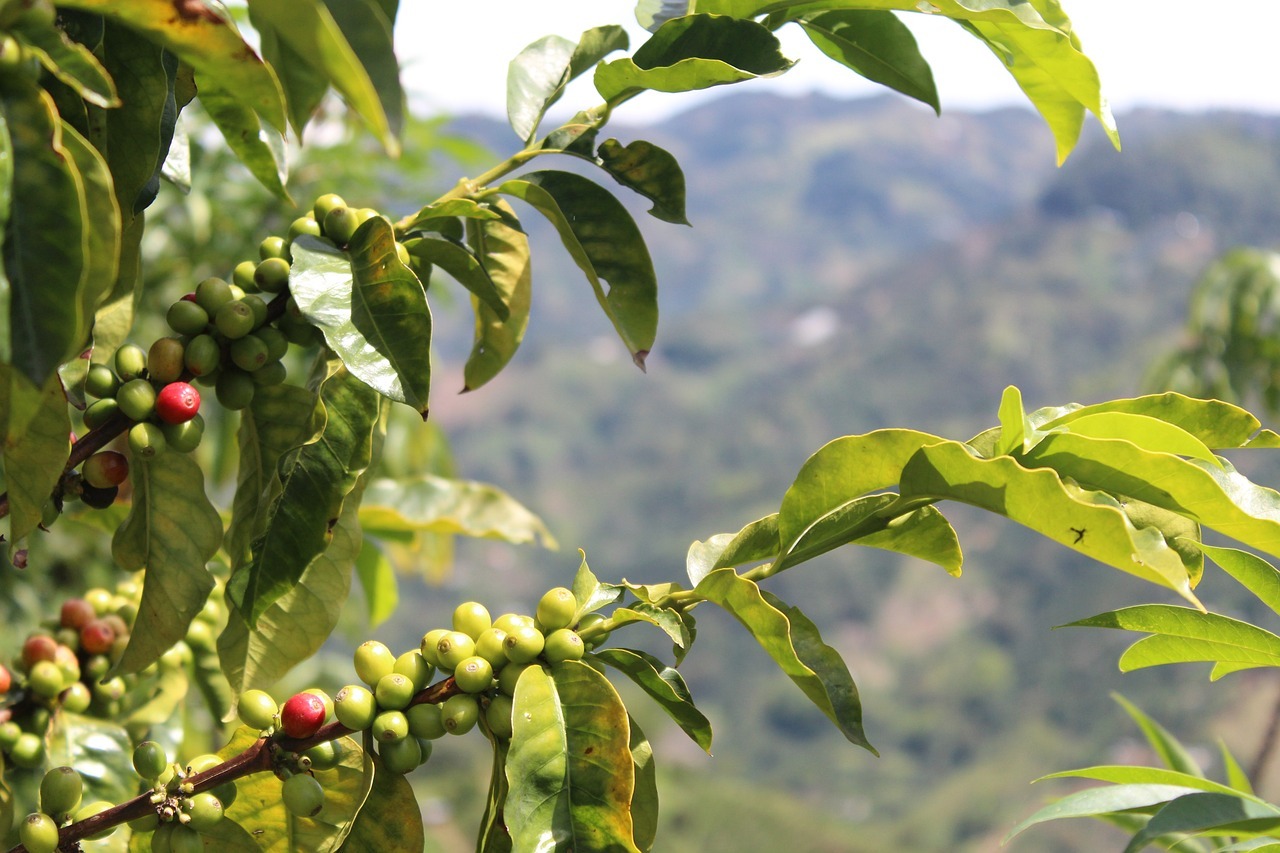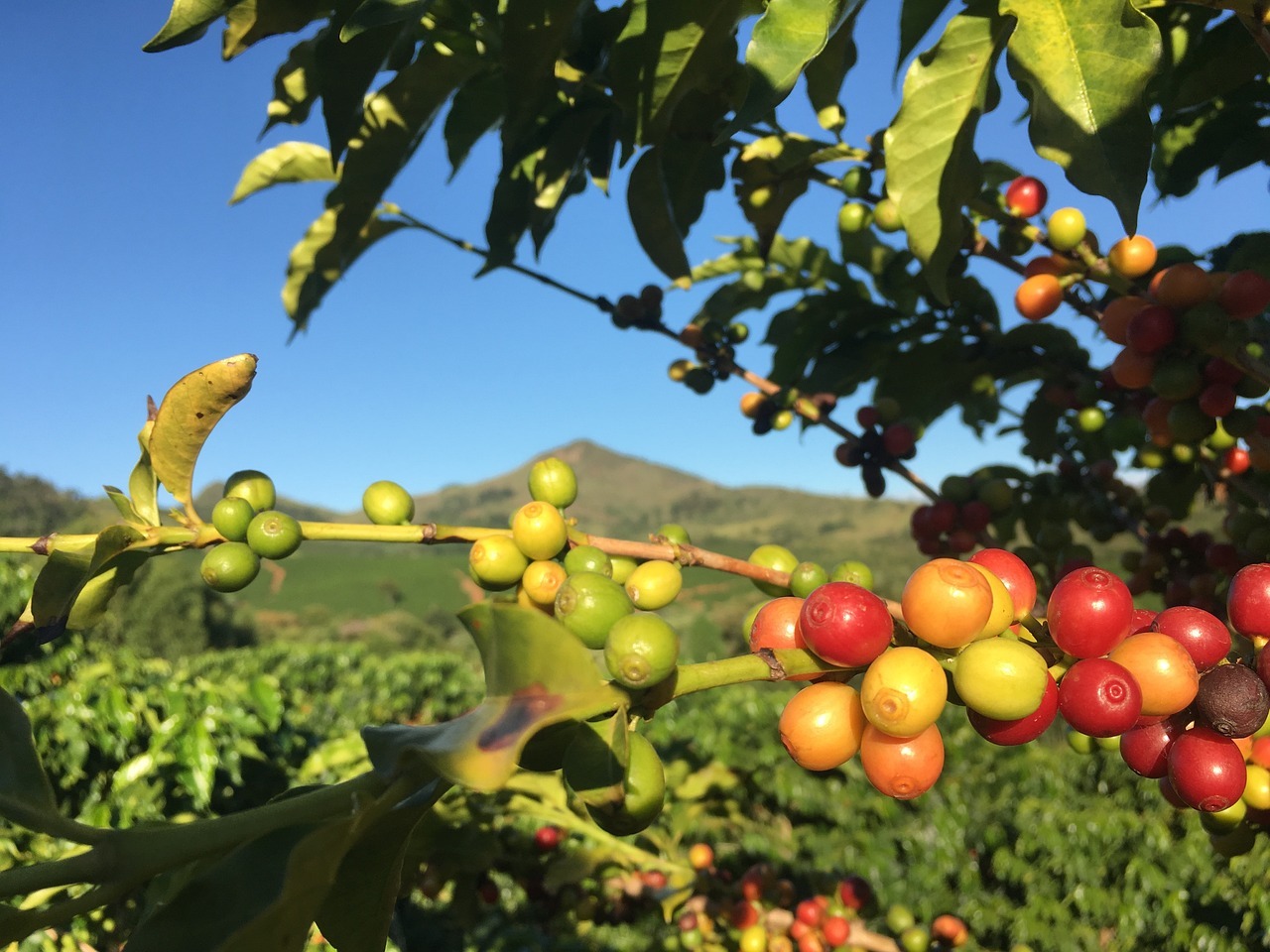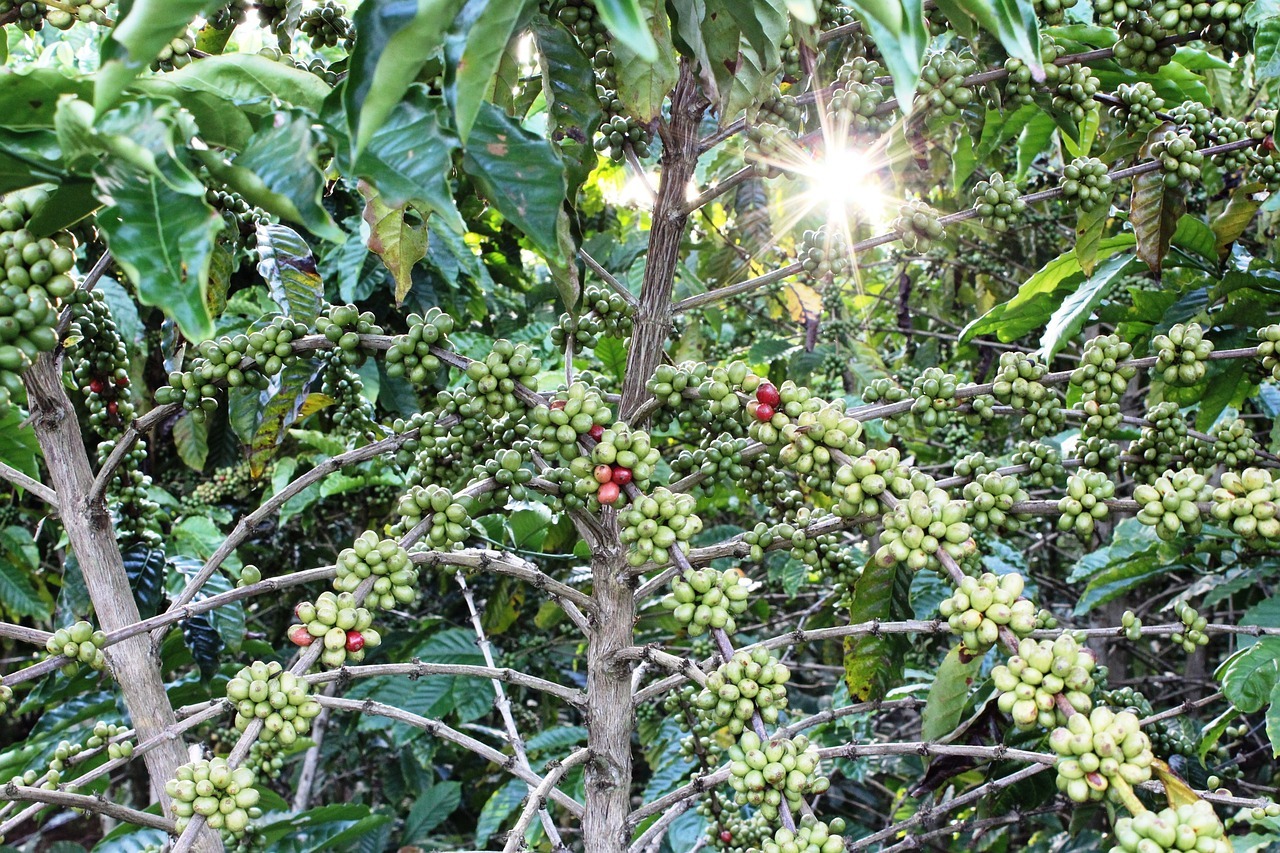The flavor of a bean is influenced by the altitude at which it is cultivated. greater elevation coffee is often of greater quality, and higher grade coffee has more nuanced taste notes than lower elevation coffee. The kind of coffee a farmer choose to plant may depend on the farm’s elevation and environment. For instance, the robusta variety prefer a lower height of 600 to 2,400′ with warmer weather, but arabica kinds often prefer higher elevations of 1,800 to 6,300′. The elevation inside the mountains has a significant influence on the coffee.
The size, shape, and flavor of the coffee are all directly affected by elevation. Finding a coffee that you enjoy might be made easier if you have a basic understanding of it. Next time you come across a bag of green coffee beans, give them a close inspection. Are they compactly shaped and small? Is the fissure line straight, zigzag, or closed? Which shade—jade, pale green, or blue—do they have? The height at which the coffee is cultivated influences each of these traits.
Water quality and temperature are the two parameters that affect taste and quality. Cooler temperatures at higher elevations reduce the coffee plant’s pace of development. The plants concentrate more on reproduction when they grow more slowly. The plant then expends more energy on producing beans, which results in a greater production of the sugars that give your favorite coffee its incredible flavor. Additionally, areas higher up in the watershed have greater drainage than areas lower down. Less water in the beans concentrates the tastes that the sugars produce because of improved drainage.
Impacts of elevation
Beans cultivated at higher elevations—above 1,300 meters (4,500 feet)—tend to be more “acidic” and impart aromas like fruits and berries in the drink. Altura, which means height in Spanish, or SHB, or super hard bean, may be used to designate this. A bean produced at a lower altitude would be ideal if you want a coffee that is smoother and more mellow in flavor. Check out the graph below and use it as a reference to discover your new favorite bean.
Elevation has an effect on the coffee bean’s physical characteristics. Hard beans grown at 4,500 feet or above in elevation are the most sought-after coffee beans. Due in part to the sluggish development that takes place in a high-altitude environment, they are highly thick. A closed fissure line, which may be zigzagged or slightly off-centered, should be present.
Meanwhile, coffee beans from lower elevations would typically be less thick and have a semi-open fissure. There will be some color difference since the kind of coffee used and the beneficiary process have an effect on the color. while processed differently—by using a honey procedure as opposed to a thorough wash—the same coffee from the same farm might have a distinct hue while it is in its green state. Having said that, the greatest indicator for identifying the coffee’s altitude will probably be the bean density.
The flavor is the key factor driving the increased demand for coffee grown at higher elevations. When properly cared for, high elevation coffee will yield the more delicious, fragrant, and acidic cup that we like, but lower elevation coffee tends to have less acidity and character in the cup. Your barista is really informing you of the elevation of the coffee you are going to consume for this reason. The general rule is that coffee cultivated at greater altitudes will generally taste better, so if it was grown at 5,200′, it should be tasty.
Impacts on quality and flavor
Coffee’s flavor may be influenced by a wide range of factors, including the plant type, the soil’s chemistry, the climate, the quantity of rain and sunshine, and even the particular height at which the coffee is grown.
The differences in coffees from various nations, growing areas, and plantations throughout the world are mostly due to these crucial factors as well as the methods used to process the cherries after they have been gathered.
Even within the same plantation, the mix of elements is so complicated that there are variations in quality and flavor.
Variations of elevations around the world
Although height has a big impact on coffee taste and density, it’s crucial to remember that coffee cultivated in various regions of the world at the same altitude can have wildly diverse flavor profiles. For instance, coffee cultivated at elevations of 5,000 feet or above may reveal fruity, flowery, or spicy characteristics in some locales, while salted caramel and rich, creamy notes may be present in others, such as Nepal. More than 50 nations in the globe produce coffee.
Hawaii
Although there are coffee farms on all of the Hawaiian islands, Kona coffee from the big island of Hawaii is the most well-known and is in constant demand. On the slopes of the volcanic Mauna Loa volcano, nature has created the ideal habitat for the coffee plants to flourish. It frequently appears like farmers are growing seedlings in rock when young trees are put in black, volcanic soil that is so fresh. Tropical clouds’ afternoon shadow creates a natural canopy over the trees, shielding them from the hot heat, while regular island showers provide the plants with the ideal quantity of moisture. In order to produce a beautifully rich, fragrant cup with medium body, Kona coffee is meticulously prepared.
Mexico
Although there are over 100,000 coffee growers in Mexico, small farms are more popular than huge estates, making Mexico one of the world’s top producers of the beverage. The southern states of Chiapas, Oaxaca, and Veracruz are home to the majority of farms. Mexican coffee often has a rich scent and complex flavor, frequently with a noticeable sharpness. It works well for dark roasts and is frequently used in mixes. A coffee from Mexico with the designation “Altura” was cultivated at a high elevation.
Puerto Rico
Puerto Rico became the sixth largest exporter of coffee in the world by the late 19th century after coffee was first imported to the island from Martinique in 1736. However, severe hurricanes and competition from other nations that produce coffee compelled the island to look for alternative economic survival strategies. With carefully grown coffee made from premium Arabica types and processed to the highest standards, the coffee industry is now being revitalized. On the Caribbean island, Grand Lares in the south central area and Yauco Selecto in the southwest are the two principal growing regions. Both areas are renowned for their beans’ delicious scent, moderate body, and acidity.
Guatemala
Although Guatemalan coffee may not be as well-known as some of its neighbors in Central and South America, many people adore it for its robust flavor. Antigua, Coban, and Huehuetanango are the three primary growth areas, and each has an awe-inspiringly untamed scenery and fertile volcanic soil. The quality and flavor of the “strictly hard beans” (grown at elevations of 4500 feet/1370 meters or above) are significantly influenced by microclimates. This coffee has a medium to heavy body and a rich, complex flavor that nearly tastes spicy or chocolaty.
Costa Rica
Only wet-processed Arabicas are produced in Costa Rica. It’s frequently said to as having the ideal balance due to its medium body and pronounced acidity. Coffee in Costa Rica is mostly farmed on tiny farms, called fincas. As soon as the cherries are harvested, they are transported to cutting-edge processing plants called beneficios, where the wet technique of processing is started. Costa Rica’s reputation for high-quality coffee has been developed via thorough processing, diligent farming practices, and other factors.
Colombia
Colombia, which ranks second globally in annual output, is arguably the most well-known coffee-producing country in the world. On hundreds of tiny family farms around the nation, a high standard of quality is upheld with tremendous pride and meticulous growing. These efforts lead to dependably excellent, light coffees with a well-balanced acidity. The rocky Colombian terrain offers the ideal natural environment for growth, but it is challenging to transfer the harvested coffee beans to the centers for manufacturing and transportation. This is frequently carried out by mule or Jeep until now. Excelso Grade is softer and somewhat more acidic than Colombian Supremo, the highest grade, which possesses a delicate, fragrant sweetness.
Brazil
Brazil is the largest producer of coffee in the world, and there are almost boundless spaces where it may be grown. Brazil is home to several enormous coffee farms that require hundreds of workers to maintain and run in order to produce vast amounts of coffee. Both Arabica and Robusta are produced; the optimal kind to grow in a given area depends on the temperature, soil type, and altitude. Brazilian coffee is known for being crystal clear, sweet, medium-bodied, and low-acid.
Ethiopia
It’s not difficult to think that coffee originated in Ethiopia, where wild coffee tree forests are still the main source for harvesting. According to coffee folklore, the first coffee trees were discovered there. Ethiopian coffee is typically wet processed and originates from one of the three primary producing regions: Sidamo, Harrar, or Kaffa. An Ethiopian coffee often makes a striking and assertive statement in the cup by being full-flavored, somewhat earthy, and full-bodied.
Kenya
Both in the United States and Europe, Kenyan coffee has widespread recognition and popularity. The beans yield a substantial body, rich scent, and a crisp, fruity acidity. In the foothills of Mount Kenya, modest farmers frequently cultivate coffee. Quality is a priority for Kenyan farmers, thus drying and processing processes are closely supervised and observed. Kenya’s grading scheme is distinctively its own. The biggest bean in a 10-size grading system is the Kenyan AA, and AA+ indicates that the bean was estate grown.
Ivory Coast
One of the world’s top producers of Robusta coffee, which has a powerful scent with a light body and acidity, is the Ivory Coast. Because of its suitability for a deeper roast, this cultivar is frequently used in espresso mixes.
Yemen
The century-old, traditional method of growing coffee is still used in the nation where it was initially grown for economic purposes. Coffee plants are nearly always present in tiny, terraced gardens on family farms. Coffee beans cultivated in this dry region tend to be smaller and more erratic in size and form since water is limited there. Due to the lack of water, the coffee cherries will undergo dry processing following harvest. As a result, Yemeni coffee has a unique flavor that is deep, rich, and unmatched.
When coffee was transported across the ancient world from the renowned Yemeni port of Mocha, the term “Mocha” came to be associated with Arabic coffee. The first coffee mix, Mocha Java, was created by the Dutch by combining coffee from Arabia with coffee from the island of Java.
Indonesia
One of the biggest nations in the world, Indonesia, is made up of thousands of islands. Sumatra, Java, and Sulawesi are a few of the major islands that are well-known for producing high-quality coffee. Dutch colonists brought the coffee plant to Indonesia in the 17th century, and the nation quickly took the lead in global production. These days, 1-2 acre tiny farms provide the majority of the dry processed coffee. Coffees from Indonesia are renowned for their distinct rich, full body and low acidity.
Additionally, Indonesia is renowned for its superb aged coffees, which were stored for a while by farmers in order to sell them for better prices. The coffee is carefully aged during storage in Indonesia’s warm, humid climate, producing a coffee that is appreciated for its deeper body and lower acidity. Even with current technology, this technique cannot be equaled.
Vietnam
Vietnamese coffee was first introduced to the country by French missionaries in the middle of the nineteenth century, who imported Arabica plants from the island of Bourbon and planted them near Tonkin. The coffee business has lately been revived, and it is expanding so quickly that Vietnam is quickly overtaking other countries as one of the top producers. Today, Robusta coffee is largely grown on tiny estates in the southern part of the nation. Vietnamese coffee, which has a gentle body, soft acidity, and good balance, is widely utilized in blending.
Conclusion
You may significantly improve your coffee experience by being aware of how altitude affects coffee flavor and density. You can better enjoy the distinctive flavor profiles of various coffees by taking into account the altitude, soil drainage, and bean structure, and you can also optimize your roasting technique for a perfect cup every time.





